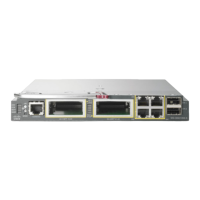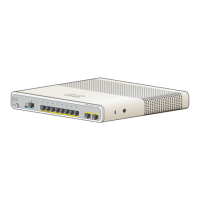Usage Guidelines
You cannot configure speed on 10-Gigabit Ethernet ports.
Except for the 1000BASE-T small form-factor pluggable (SFP) modules, you can configure the speed to not
negotiate (nonegotiate) when an SFP module port is connected to a device that does not support autonegotiation.
The new keywords, 2500 and 5000 are visible only on multi-Gigabit (m-Gig) Ethernet supporting devices.
If the speed is set to auto, the switch negotiates with the device at the other end of the link for the speed
setting, and then forces the speed setting to the negotiated value. The duplex setting remains configured on
each end of the link, which might result in a duplex setting mismatch.
If both ends of the line support autonegotiation, we highly recommend the default autonegotiation settings.
If one interface supports autonegotiation and the other end does not, use the auto setting on the supported
side, but set the duplex and speed on the other side.
Changing the interface speed and duplex mode configuration might shut down and re-enable the interface
during the reconfiguration.
Caution
For guidelines on setting the switch speed and duplex parameters, see the “Configuring Interface Characteristics”
chapter in the software configuration guide for this release.
Verify your settings using the show interfaces privileged EXEC command.
Examples
The following example shows how to set speed on a port to 100 Mbps:
Device(config)# interface gigabitethernet1/0/1
Device(config-if)# speed 100
The following example shows how to set a port to autonegotiate at only 10 Mbps:
Device(config)# interface gigabitethernet1/0/1
Device(config-if)# speed auto 10
The following example shows how to set a port to autonegotiate at only 10 or 100 Mbps:
Device(config)# interface gigabitethernet1/0/1
Device(config-if)# speed auto 10 100
Command Reference, Cisco IOS XE Everest 16.5.1a (Catalyst 3650 Switches)
127
speed

